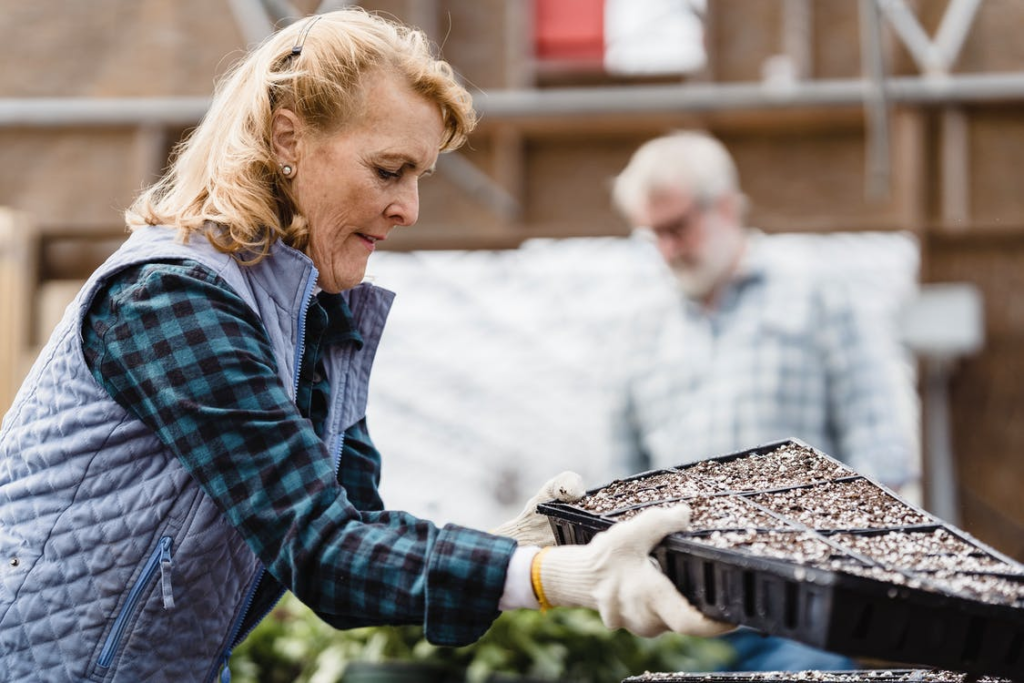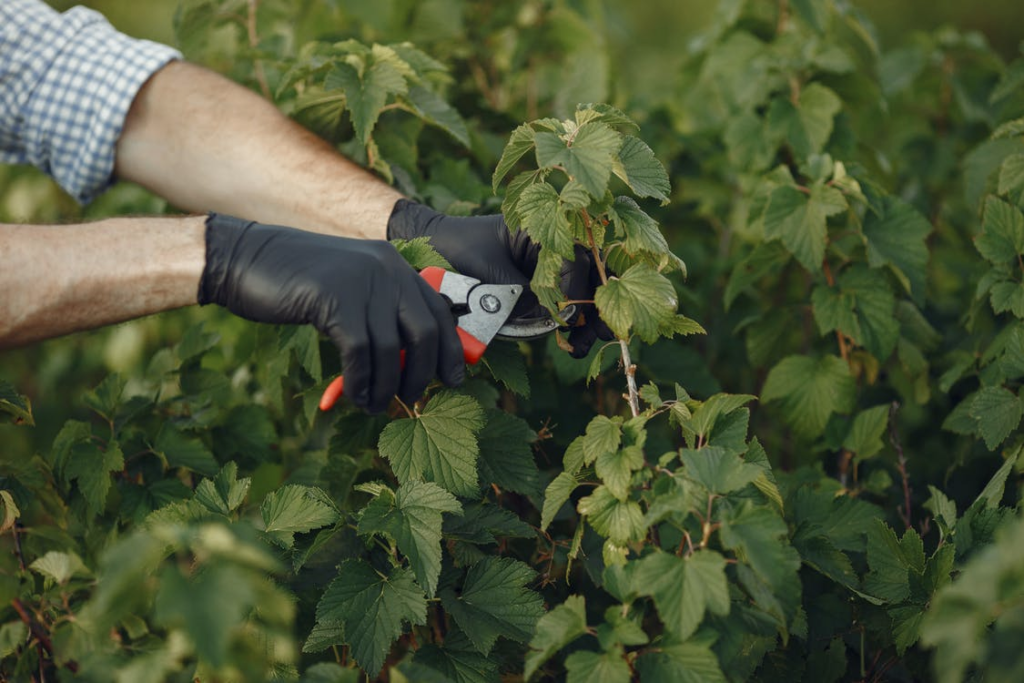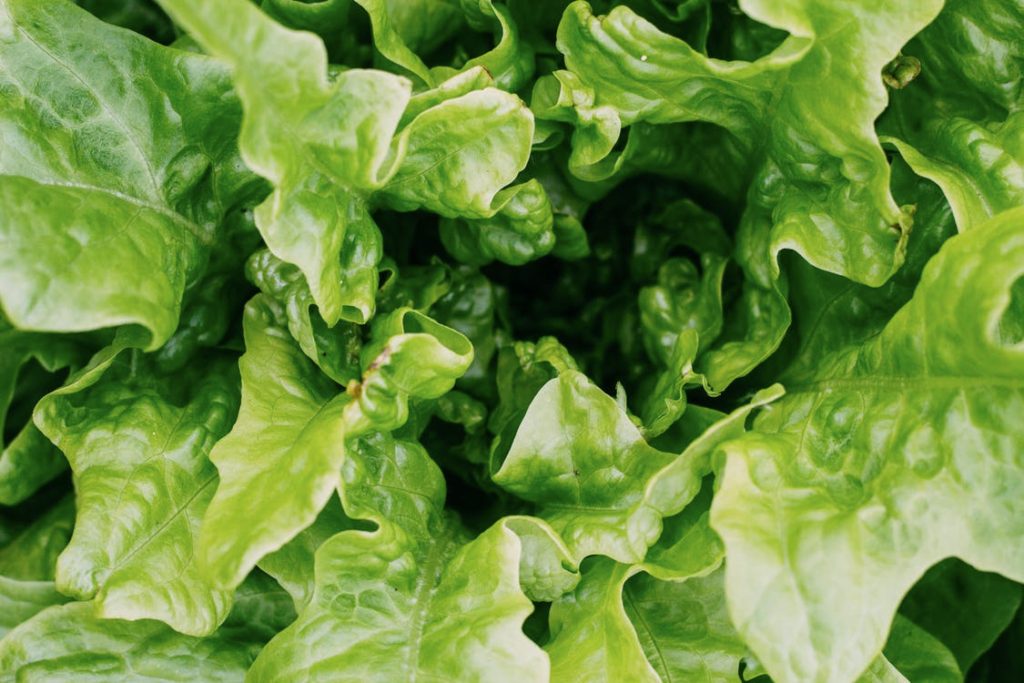A lot of people want to know how to harvest romaine lettuce. Fortunately, I have just the guide to do that right away.
Romain lettuce, also known as, Lactuca Sativa, has long dark leaves and a tall head. It looks slightly different from the usual lettuce we all know, and it is also resistant to heat. This type of lettuce originated from the Greek island of Kos.
Romain lettuce is not special only because of its look, but it also has several health benefits as well. It may be low in fiber, but it is a great source of vitamins, magnesium, calcium, and potassium, and contains a lot of minerals on top of that.
People love putting Romain lettuce in their Caesar salads. It especially goes well with any kind of salad dressing, including low carb salad dressing, so you can try and experiment with it if you want. Some people even grill it because they love the distinctive crunch of this lettuce.
Easy to grow
Beginners would love growing romaine lettuce as this variety of lettuce seeds is one of the easiest to grow. This also makes the lettuce variety perfect for home gardens. Nevertheless, I am sure many beginners have a ton of questions regarding growing and harvesting romaine lettuce. Don’t worry, and I have prepared all the answers that you’ve been looking for.
Time and method
Time and method are two crucial factors when it comes to harvesting your lettuce. These two factors can heavily affect the quality of your lettuce. If you took too long, the lettuce might be too ripe and lose its crispy texture that people love. In contrast, if the timing is correct, the lettuce can even be eaten straight from your garden.
There are two methods you can do to harvest your romaine lettuce. The first method is by removing the whole head of the lettuce. The second method is by removing only the outer leaves and leaving the inner ones in place so they can continue to grow in the garden.

Learning the maturity date of your romaine lettuce
A maturity date is a period from when the seed is sown in the soil to when the plant vegetable is expected to mature or flower. For romaine lettuce, the maturity period is between 55 to 65 days. Keep in mind that the maturity period is never constant. There are some factors that will change the period.
The biggest factor is the growing conditions. Growing conditions heavily vary depending on the quality of the soil, sunlight, weather, and many other things. Therefore, you shouldn’t rely too much on the calendar to know when you can harvest your lettuce. Always treaty the maturity period of the seeds on the packaging as no more than an estimate.
How to harvest romaine lettuce by pulling the entire head
As mentioned above, there are two methods to harvest your lettuce. One of them is pulling the entire head of the lettuce. Harvesting a whole head of lettuce requires a lot of energy and patience on your part. You can make this method easier by using a harvesting bag. Additionally, this tool can prevent damage to your precious lettuce.

This method offers the best way for people who want to enjoy plenty of fresh lettuce. You can easily make a large salad by using this method. Typically, you will find that romaine lettuce heads are ripe for picking between 60 to 75 days. In other words, expect to wait until three months before you can harvest your lettuce. Again, use this information as an estimate only.

Now here is some important information for you. To identify if the lettuce has matured or not, you can take notice of the visual changes in its appearance. If its leaves have a dark green color and have started to open, that means it is ready to be harvested.
The next important step is using gardening shears to cut the base of the approximately. Don’t cut too much here; one inch above the soil is good enough. Avoid cutting through the soil or rocks around the lettuce so you won’t damage your shears.

Second and third harvest
Now, the base of the lettuce should still be intact. Chances are, some more leaves will sprout and be ready for the second harvest. After the second harvest, the new leaves should be ready to harvest within 60 days.
Also, don’t be alarmed when the second harvest looks different from the first. This is common after the first harvest. The lettuce leaves will have a looser look and might not form the shape of the head at all.
Some people do this method a bit differently. They pull the lettuce out from the ground before trimming the roots. This method is possible. However, there is a risk that the structure of the soil may get damaged in the process. It could also be bad if there are other lettuce plants in the area as they could get damaged while you’re harvesting one.
That said, if you do not want to have a second harvest, this method should be viable. Still, you shouldn’t be careless when doing this method as the risk is still there.
After you’re done harvesting your lettuce, you can bring it inside and wash it before breaking the leaves away from the head. You should always remove the leaves first before consuming them. However, if you’re planning to keep it for a few weeks, keeping the leaves intact could make it last longer.
Harvesting the outer leaves of a romaine lettuce
Now let’s talk about the second method, which is harvesting the outer leaves of romaine lettuce. When using this method, I recommend you pick the leaves in the morning as it is the time when the leaves are fresh and not exposed to the sun yet. The sun will make the leaves dry and wilt after a few hours.
Mature romaine lettuce can have left as long as eight inches. You don’t have to wait for the leaves to get this long. They are ready to be harvested after reaching a few inches tall. When you are ready to harvest your lettuce, you can use your hands or some scissors to pick the leaves.
One more thing before you start is to remember that picking individual leaves is the recommended way, especially for people who want to keep their lettuce plant growing. As you may already know, as long as the central stem is intact, the plant will keep growing.
Now let’s get on to harvesting the lettuce. Grasp the base of the lettuce leaf firmly and twist it. You should feel the stem snap away from the base. Do not pull the leaves upwards immediately because you might pull the entire plant out.
Once you’ve picked the leaves, you can now wash them. Clean the leaves and store them inside your refrigerator. You can store the leaves in the refrigerator for several days before they start to wilt. Now it’s time for a taste test. See if you like the taste of your lettuce. If not, you can try using high-quality organic compost to improve it.

Why you should pick individual leaves
Picking individual leaves will result in more harvests from your plant. You can even get more harvests by only picking the most mature leaves each time. This way, you can get up to four harvests from your romaine lettuce.
Again, don’t be alarmed when subsequent harvests look and feel different. The first harvest will always be the biggest. Second, third, and more harvests will yield smaller results.
FAQs
How do you get a second harvest?
Romaine lettuce thrives in chilly climates with temps somewhere around 60°F. In these climates, you can easily get a second harvest from your lettuce. Your lettuce will start growing more leaves if you trim it about one inch from the base near the soil area.
When the leaves grow about five inches tall, you can start picking the outer leaves like last time. And once the leaves are about six to eight inches tall and overlapping, you can cut off the entire head instead.
If some areas of your garden don’t get enough sunlight, your vegetable plants won’t grow well in shady areas. This could also happen if the vegetable plant is located between taller plants. Fortunately, romaine lettuce can thrive in this kind of situation.
How do you know when to harvest romaine lettuce?
The typical maturity period of this type of lettuce is between 60 to 75 days after planting. There is an alternative for people who don’t want to wait for the harvest time or until the lettuce is fully matured. You can just simply pick out baby leaves sprouting and use the crisp leaves in your salad instead.
Here are some additional tips for you.
1. Harvest the entire head

When you see that the leaves of your lettuce have grown up to eight inches and overlap each other, you will know that they have fully matured. As mentioned above, while lettuce typically needs 60 to 75 days to fully mature, the maturity period may vary.
Take notice of the ribs at the bottom center of the lettuce. If you see that the ribs aren’t too thick or big, then you’ll know it is the right time to harvest the head. If you waited too long, however, the ribs would turn into a milky tint color.
When the ribs are watery, they are usually rougher and more bitter than usual. If the rib is firm, that usually means the lettuce is mature. It may sound tedious checking the whole head of the lettuce daily. But doing this will help you immensely. And once you’ve gotten used to it, this will only take a few minutes to do.
2. Harvest before maturity

When you notice that the romaine lettuce has grown about six inches long, that means the plant has reached the mini head stage or baby lettuce leaves stage. You can actually start harvesting your lettuce during this stage.
You can start harvesting your lettuce while letting it grow some more at the same time. To do this, simply pick out leaves from the lettuce’s exterior that is not affected by wilt or rot. Trim them out around an inch from the rib or stem.
Remember that you can only harvest a few leaves on the outside of each plant. Always leave the leaves on the inside to finish mature. Yes, the leaves are smaller, but you can let multiple heads grow so you can get a steady supply of lettuce all year long.
Problems you might encounter during harvest

Harvesting a lettuce crop could be difficult to some known issues.
1. Flower shoots
If you live in warmer regions, your lettuce may produce flower shoots. When this occurs, and you want to have a second harvest, try to remove the entire plant except for one inch of the stem. Also, try to keep the plant cool by putting it under the shade or covering it with a shade cloth.
“Bolting” is also a common issue that you may face. An indication of “bolting” is when the lettuce loses its freshness and turns bitter. To alleviate this issue, wash your lettuce with fresh water, clean them, dry them, and store them in the refrigerator. This could reduce the bitterness when consumed.
2. Leaves turning yellow
When the lettuce leaves turn yellow and lose their dark green color, then there must be a problem with them. This issue could happen due to the mosaic virus, an illness spread by insects like leafhoppers and aphids. The biggest problem is that the virus cannot be cured.
To stop the virus from spreading further, you have to act fast. Remove the afflicted plants right away. Keep them away from other healthy vegetable plants. Additionally, I have two tips to prevent this problem from happening to your lettuce: use aluminum mulch and trim them regularly.
3. Lettuce tip burn
Lettuce tip burn is when the leaves of your lettuce turn brown around the edges. This typically happens due to dehydration.
To solve this problem, simply cut the browning leaf tips – only the part where the leaf turns brown. Use a sharp pair of scissors for this. Then, gather the remaining loose leaves or just let them grow.
Next, as dehydration is often the cause, make sure you water your lettuce frequently. This is especially important if you live in hotter, drier areas. Otherwise, lettuce may require less water in mild climates or areas with frequent rainfall.
Bonus tips on growing romaine lettuce
- The ideal growing conditions for romaine lettuce are full sun or partial shade. Give the lettuce plants enough sun exposure of at least four hours a day. Raise beds could help a lot here.
- Heat waves in spring and summer could cause lettuce plants to start bolting early. Do the tips above to reduce the severity of this problem.
- Hanging baskets are great for growing lettuce. Row covers can also be used to keep pest problems under control. Flea beetles and aphids are the two main culprits.
- During warmer climates, give your lettuce some sun protection. Make sure the inner leave, stems, and center leaves are not exposed to the sun too much as they are weak to heat.
Conclusion
I hope this guide can help you grow and harvest your lettuce properly. Use the tips above to make sure the process goes smoothly so you can enjoy fresh lettuce anytime you want.




